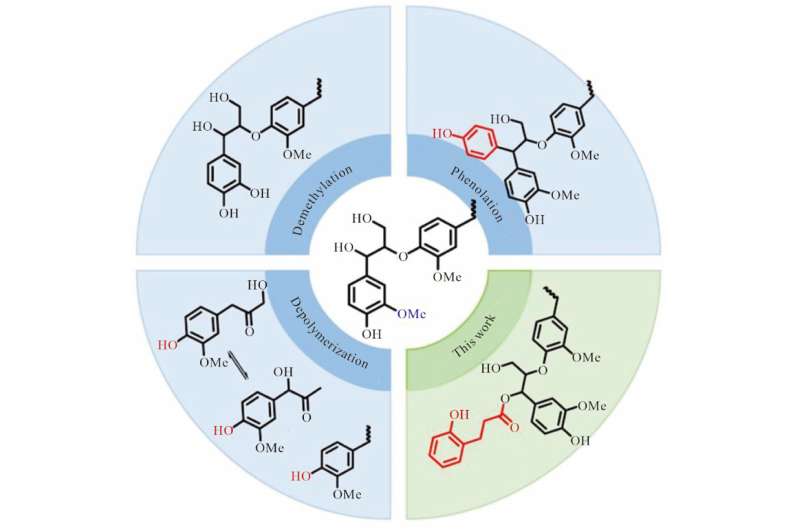Researchers at Guizhou University have discovered a groundbreaking method to transform lignin, a byproduct of paper-making and biorefining, into a high-performance sunscreen ingredient. This sustainable innovation could revolutionize the skincare industry by providing a natural and eco-friendly alternative to synthetic UV-blocking agents. The research, published in the Journal of Bioresources and Bioproducts, showcases the potential of biomass-derived materials to address the growing demand for greener personal care products.

TURNING OF LIGNIN INTO UV RAY BLOCKER
Scientists have developed a ‘green’ way to create a key ingredient of sunscreens and other products.
Lignin, which is hard to render otherwise useful because its complex molecular structure complicates typical industrial processes, was converted into a new derivative, lignin-3-(2-hydroxyphenyl)propionate ester (LPPE), by an organocatalytic approach. The new technique utilizes a transesterification reaction of 3,4-dihydrocoumarin (DHC) with the aliphatic hydroxyls in lignin to mild oxidation and increase phenolic hydroxyl groups—the key to its improved UV-absorbing and antioxidant properties.
Maximal UV Absorption and Antioxidant Activities
In addition to the chemical strategy, the newly prepared LPPE achieved outstanding UV absorption and antioxidant testing results. At a concentration of 5 mg/mL, the study found that LPPE evinced up until 90% free radical scavenging activity in as little as 20 minutes. In addition, the LPPE-infused formulation incorporated into a sunscreen cream at 5% enhanced the Sun Protection Factor (SPF) value over 40.9 as compared to a SPF value of around <2 when using high dose BP.
These results highlight the high performance of LPPE as a UV-protective and antioxidant Sunscreen-active. By using this material, the raw materials of sunscreens containing UV blocking components instead of petroleum-based synthetic chemicals could potentially give rise to healthier alternatives with lower environmental impacts for consumers.
An Effort Towards a Greener, Sustainable Future
Such work not only establishes an eco-efficient route to the upgradation of lignin, but it also offers a promising perspective toward commercial-scale production of photoactive materials for environmentally friendly sunscreens. This one product increases the value of the lignin and open up a broad avenue to convert otherwise unvalued biomass into useful products (Can Easily Turn [Unpriced Biomass] into High-Value Products).
This innovation has the potential to influence more than just the skincare industry as it opens a new realm for sustainable personal care products. The researchers showed that natural, renewable resources can be used to achieve synthetic-grade performance without tradeoffs in efficacy or environmental impact. This research can encourage therapeutic uses which are needed against the increased natural alignment of green and ethical consumer market, hence, will also push innovation in the field of sustainable cosmetics as well as personal care business.
